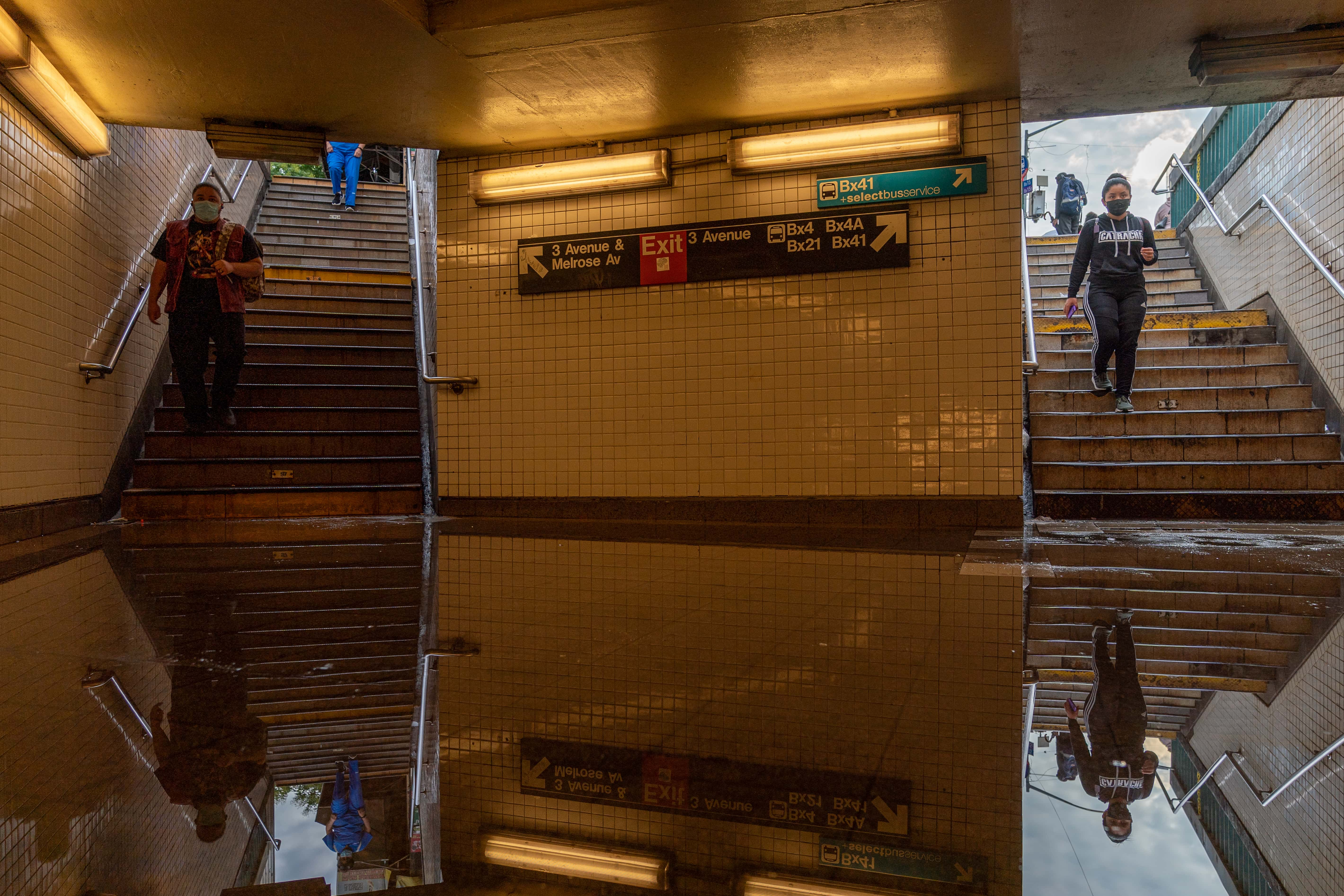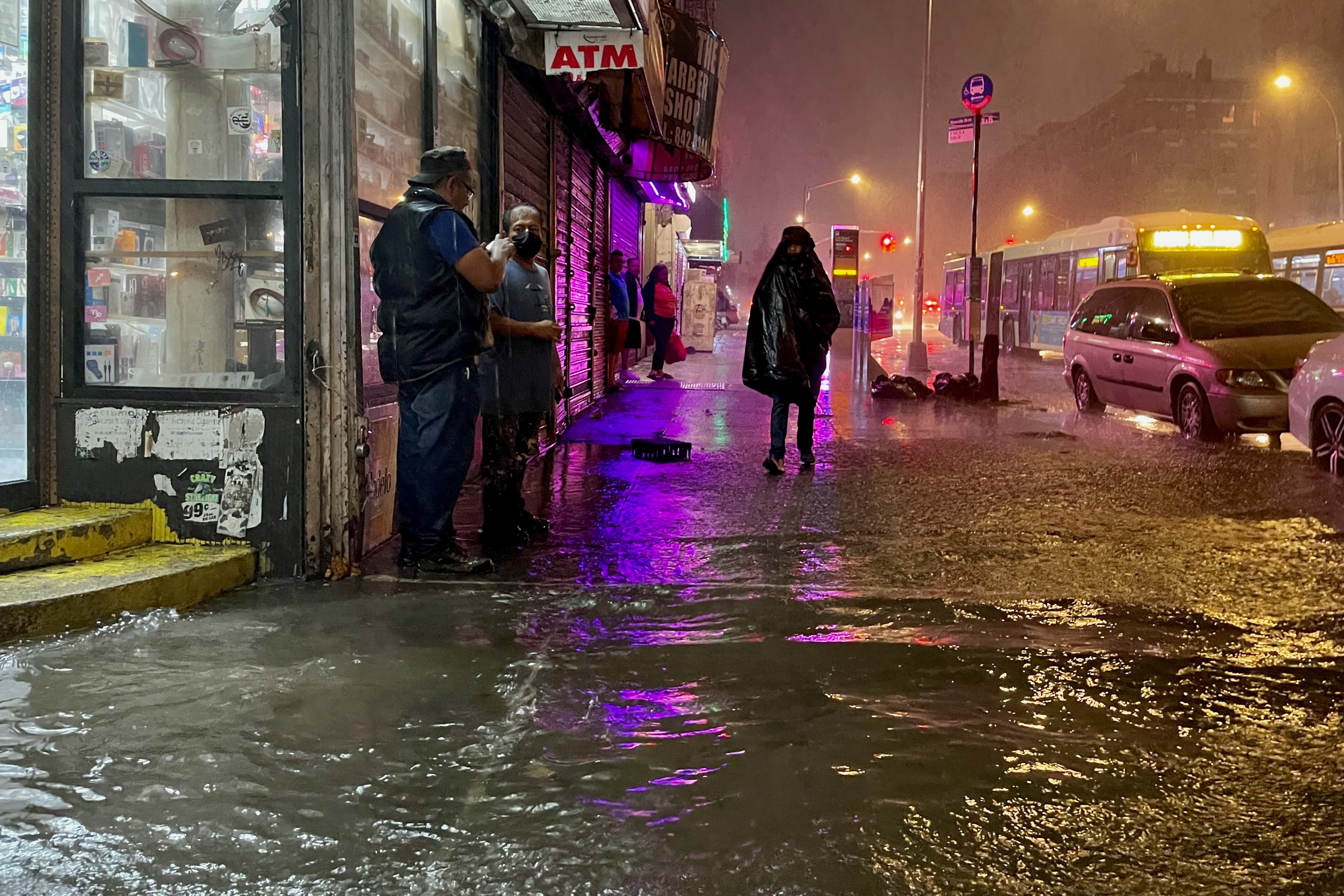NYC basements turn into deathtraps amid Hurricane Ida floods, no relief till 2023

As the remnants of Hurricane Ida swept through New York City, at least 44 people were killed in the flash flooding on September 1 and 2. Of those, eight people were reported to have died after being trapped in flooded basement apartments. However, their deaths could have been totally avoided under Mayor Bill de Blasio's Stormwater Resiliency Plan. The plan does involve a system to keep basement dwellers out of harm's way, but it is due to be completed only in 2023.
The record rains brought on by Ida have devastated New York City, with many videos going viral showing the extent of the damage. Subway stations all across the city were flooded, suspending all lines as of September 2. Newark airport was also flooded, recording 3.24 inches of rain that led to flights being halted. The city is facing a double blow, after Hurricane Henri barrelled into it earlier in August as well, which resulted in severe flooding.
RELATED ARTICLES
Hurricane Ida: Tornado slams Annapolis, ‘scary’ images of damage surface online
Hurricane Ida forces Mississippi river to 'flow backwards' in epic fury of nature
The record-breaking storms are only expected to get worse, as climate change inaction continues to have a deadly effect. To prepare for the upcoming floodings, de Blasio launched his Stormwater Resiliency Plan way back in May, with a specific plan for basement dwellers. The only issue is the timeline, which meant city officials couldn't get to the eight that died this year. It also means basement apartment dwellers are at risk next year as well.

Plan for basement apartments
Under the mayor's plan, notifying residents of basement apartments is one of the key initiatives of the plan's goals. The city's Office of Emergency Management (EM) unit will be responsible for pre-drafting a message that will be used to notify basement dwellers in advance of "forecasted extreme rain events." Effectively, under the plan, anyone living in a basement apartment will get a notification to evacuate ahead of storms. It's that simple.
Yet, for some perplexing reason, the mayor has listed a completion date of 2023. There's no other plan for basement apartments, such as building reinforcements or storm sewers, but they may ultimately have little effect on basement apartments. Getting people out is the only vital option, so it seems bizarre that there's no plan to warn them sooner. Because of that delay, at least eight New Yorkers were trapped in their basement apartments and died this year.

It doesn't get any better for de Blasio, as the public document reveals. It shows that catch basins, responsible for holding floodwater aren't well maintained, allowing the water to spill onto the streets and into homes. That is despite four different agencies being responsible for maintenance - the Departments of Environmental Protection, Sanitation, Transportation, and the Office of Emergency Management. It also highlights the fact that the city's sewer system can only handle about 1.75 inches of rain per hour, and is projected to increase to about 2.15 inches per hour, but not until at least 2040. Meanwhile, on September 2, 3.15 inches of rain fell per hour in New York City.
The NY Post further reported that de Blasio has blown past a spring 2021 deadline to amend the Uniformed Stormwater Rule. The rule required developers of all new projects to do more to prevent water runoff on their sites. An official said the pandemic was the blame, with the amendment coming "this fall". Hurricanes Henri and Ida have laid bare NYC's lack of preparedness, and de Blasio's lengthy timelines mean that people are still at extreme risk, for the foreseeable future.










